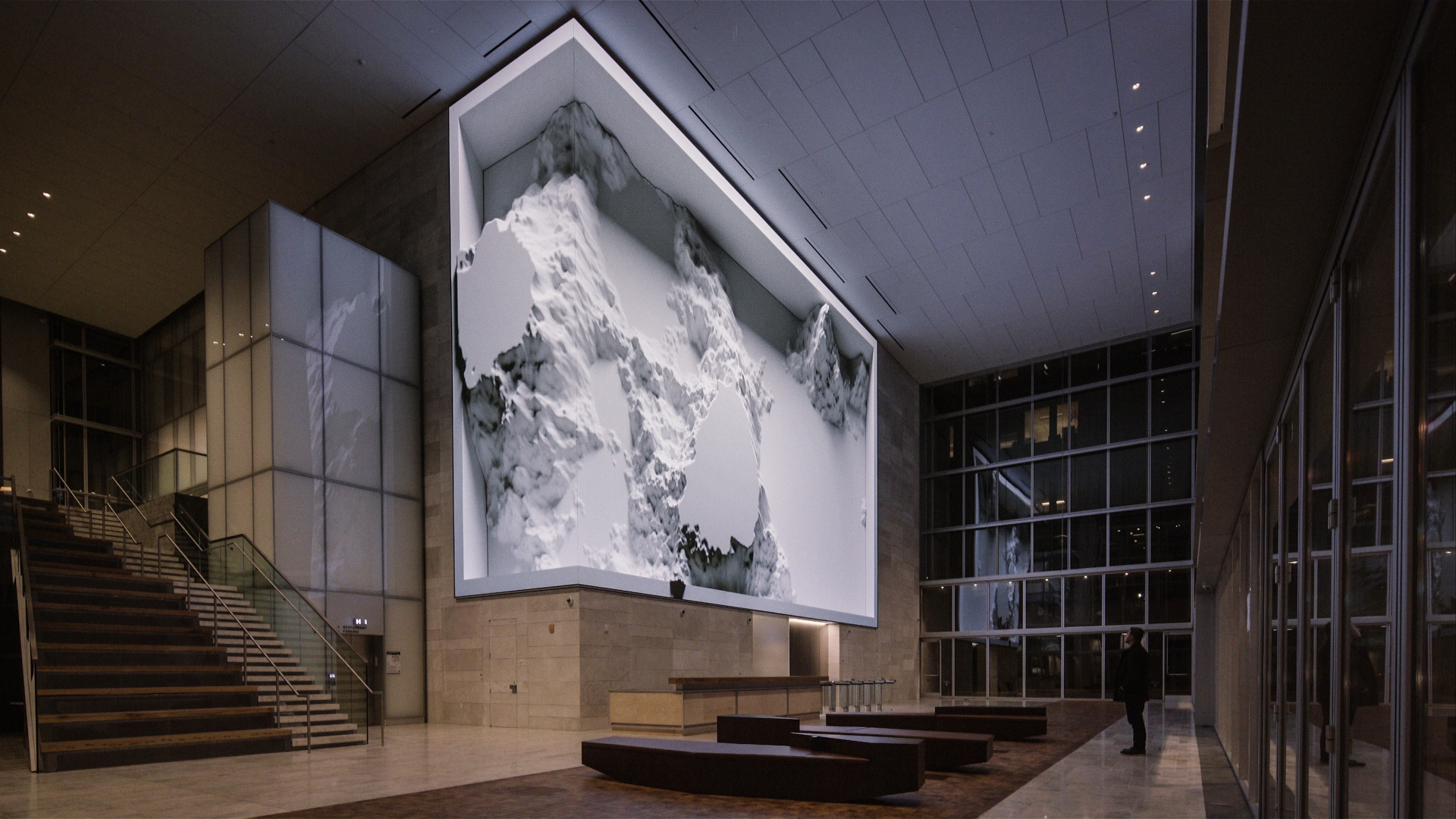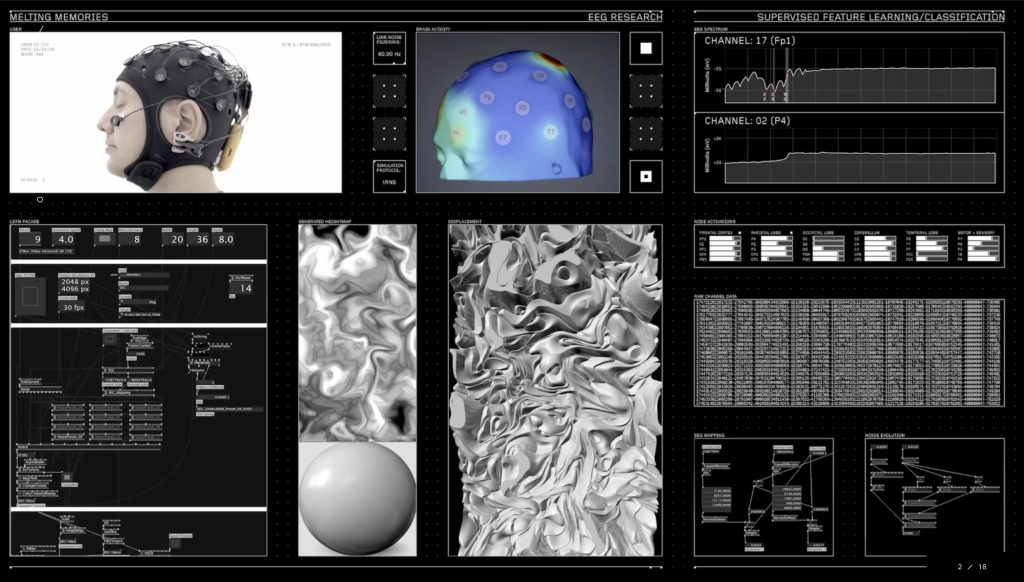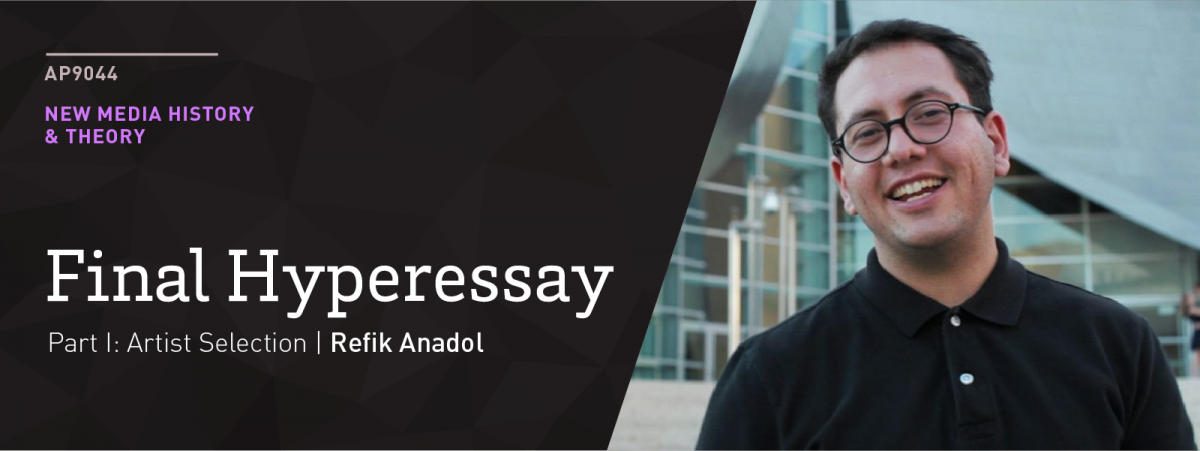About the Artist
Refik Anadol is a contemporary media artist that works across a large variety of digital media. Born in Istanbul, Anadol is currently based in Los Angeles, California in the United States where he is a lecturer and visiting researcher in UCLA’s Department of Design Media Arts. He holds a master of fine arts degree from University of California, Los Angeles in Media Arts, master of fine arts degree from Istanbul Bilgi University in Visual Communication Design as well as a bachelors of arts degree with summa cum laude in Photography and Video.

Much of Anadol’s works focus on site-specificity, choosing to create digital works of public art that leverage and accentuate the surrounding architecture. He works with projections (both indoors as well as outdoors) and large scale screen installations to create immersive environments that seek to transport audiences into an imagined space. As a media artist, designer and spatial thinker, Refik Anadol is intrigued by the ways in which the transformation of the subject of contemporary culture requires rethinking of new aesthetics, technique and dynamic perception of space. His works aim to create visually agnostic depictions that form a visual language capable of appealing to varying groups of people; despite cultural backgrounds or aesthetic preferences. Due to their public nature, Anadol also caters his works towards eliciting the reactions and interactions of passers-by within unconventional spatial orientations.

By embedding media arts into architecture, he questions the possibility of a post-digital architectural future in which there are no more non-digital realities; a future whereby all human made surfaces are informed in some shape or form, by the digital footprint that mankind leaves behind. His works invite viewers to visualize alternative realities by presenting them the possibility of re-defining the functionalities of both interior and exterior architectural formations. Anadol’s work suggests that all spaces and facades have potentials to be utilized as the media artists’ canvases.
A large percentage of Refik Andols works and creative process is deeply influenced by and based off of technology – specifically generative data. We as modern society are profligate with our creation of new data. Just within the last two years, the human race has generated about 90% of all the data output ever made within the life-span of our species. The concept of smart cities and embedded sensors all over our built environment have contributed towards this exponential explosion of data-generation. We now live in living, evolving, self-aware cities bristling with input devices that are providing feedback of various kinds . We ourselves produce large quantities of data, be it through our self-expression via social media, or simply the communicative data we send each other. Often times, all of this data rarely sees the light of day; relegated to internal uses within the companies and government bodies that process these information.

Through his works, Anadol questions how our experience of space is changing now that digital objects ranging from smart phones and embedded sensors to urban screens have all but colonized our everyday lives. How have media technologies changed our conceptualizations of our everyday spaces, and how has architecture embraced these shifting conceptualizations to accommodate these changes? These are the three main questions that Anadol tackles in his works; not by simply integrating media into built forms, but by translating the logic of media technologies into spatial design itself.
Justification
Refik Anadol is a good case study to research and explore for the purposes of this hyper essay as he represents a growing trend of multimedia artists whose works are heavily dependent and influenced by data. As much as the impressionists used paint and light as their mediums, this burgeoning group of media artists to which Anadol belongs to, are using data as a medium to develop their works. The added spatial qualities of Refik Anadol’s pieces begs us to question the role spatiality plays in the experience and consumption of media art, as well as how this new phase of media art harks back to the roots of the pioneers while also carving out a new path for itself.


Fascinating overview of the work of Refik Anadol. It’s interesting how he is creating generative data works and embedding them into architectural and physical spaces. This kind of post-digital work is becoming more and more prevalent.
A few comments:
— The assignment asked for a critique of a specific artwork and your analysis was a general overview of the artist’s work and ideas, but without the specificity of an actual work.
— You were also supposed to incorporate references from concepts, artworks, readings, etc., from the class.
Your writing is very clear and you have researched the artist in an articulate manner, but you left out some of the main elements of the assignment
I see now that you included an analysis of a work the previous assignment so I can credit you for that, but the earlier assignments were intended as research for the final hyperessay, which was to include everything.